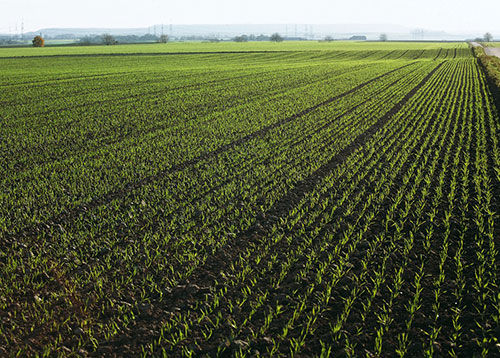4 READ-TIME
Herbicide Resistance: The State of the Nation
April 7, 2021
It’s been close to 50 years since the first herbicide resistant wild oats were found on a Manitoba farm. At that time, the discovery created only a mild sense of concern within the agriculture community in Western Canada.

Oh, how times have changed. Since then, herbicide resistance has become a cause for major concern on farms right across the country. So, it has been good to see the ag industry join forces to help manage herbicide resistance development while providing effective in-crop weed control on an ongoing basis.
Today, producers and industry recognize that herbicide resistance is a challenge that must be met by all parties. Depending on where you are, the key weeds and herbicide Group resistance vary, but the solutions are almost always the same: diverse crop rotations, promoting crop competition with weeds, rotating herbicide Groups, utilizing herbicide tank-mixes that include different herbicide Groups, scouting your fields often, keeping good records, tilling strategically and managing weed escape patches promptly to prevent them from going to seed.
The newest weapon in the arsenal seems like an obvious one; take weeds out as soon as you can to protect your yield. The tricky thing with early weed removal is that not all weeds emerge simultaneously, so what many farmers have been doing is waiting to spray until several weed species have fully emerged.
Cautionary tales from south of the border
“There are areas in the southern US where farmers have run out of herbicide options,” says Jon Weinmaster, Customer Marketing Manager for Cereals at Bayer. “And it’s not uncommon for farmers there to hire people to hand weed fields – at enormous cost.”
Across the US, farmers are encouraged to protect the herbicide tools they have by not overusing them, and short crop rotations make this increasingly difficult. However, the economic imperatives of growing high-paying crops in short rotation are very real, and farming economics are tough - growers know they need to make money when they can.
“The financial impacts can’t be ignored,” says Weinmaster. “It’s really easy to think you’re okay, that you’ve got a handle on it – until you don’t. There is a great video on Mixitup.ca of Ford Baldwin, a US farmer discussing the need for increased herbicide and crop diversity. It’s a good reminder for us here in Canada.”
Fortunately, it’s still better in Canada than in the US and other areas of the world where herbicide resistance has become such a critical problem that farmers are making crop choices based on what they can grow, not what they’d like to grow.
“Growers in Canada are getting very good at understanding their weed spectrum and realizing any resistance problems that currently exist, or have the potential to develop, and making cropping and herbicide choices with all that in mind,” says Weinmaster. “By working together as an industry, we will continue to get better at managing the risk of herbicide resistance development.”
Staying ahead of the problem
“We take herbicide resistance very seriously at Bayer,” says Weinmaster. “We want to make sure our customers have the tools they need and continue to be profitable while keeping herbicide resistance at bay.”
“On the early weed removal front, Olympus, Velocity m3, Luxxur® and Varro® herbicides are great options for wheat,” says Weinmaster. “We know that early weed control, both early at the weed stage and early at the crop stage, is a good practice. Still, we recognize that most in-crop herbicides available in Western Canada only control emerged weeds, so we let the emerged weeds get bigger while we wait for others to come up in order to “get them all”. This is a big part of why two-pass weed control is becoming more popular - and more economical. New Olympus herbicide from Bayer is used in this same two-pass system by following up in-crop with Varro or Velocity m3 herbicide, providing effective control of foxtail barley and giving a boost to controlling wild oats compared to using a standard in-crop graminicide.
The new lineup of Bayer herbicide products offers farmers many options for effective herbicide tank-mixes where more than one mode of action is included in single application. “It keeps weeds on their toes,” says Weinmaster. Now, with Roundup® and Roundup Xtend® in the portfolio, growers have several new pre-seed and post-harvest options to use along with in-crop herbicides.
“We’re here to help,” says Weinmaster. “I encourage people to think about practicing early weed removal this year, and also to visit Mixitup.ca to learn more about herbicide resistance and how it’s being managed in North America. And if they have any questions, or want advice on devising a resistance management plan for their farm, our field staff are always ready to help.”
